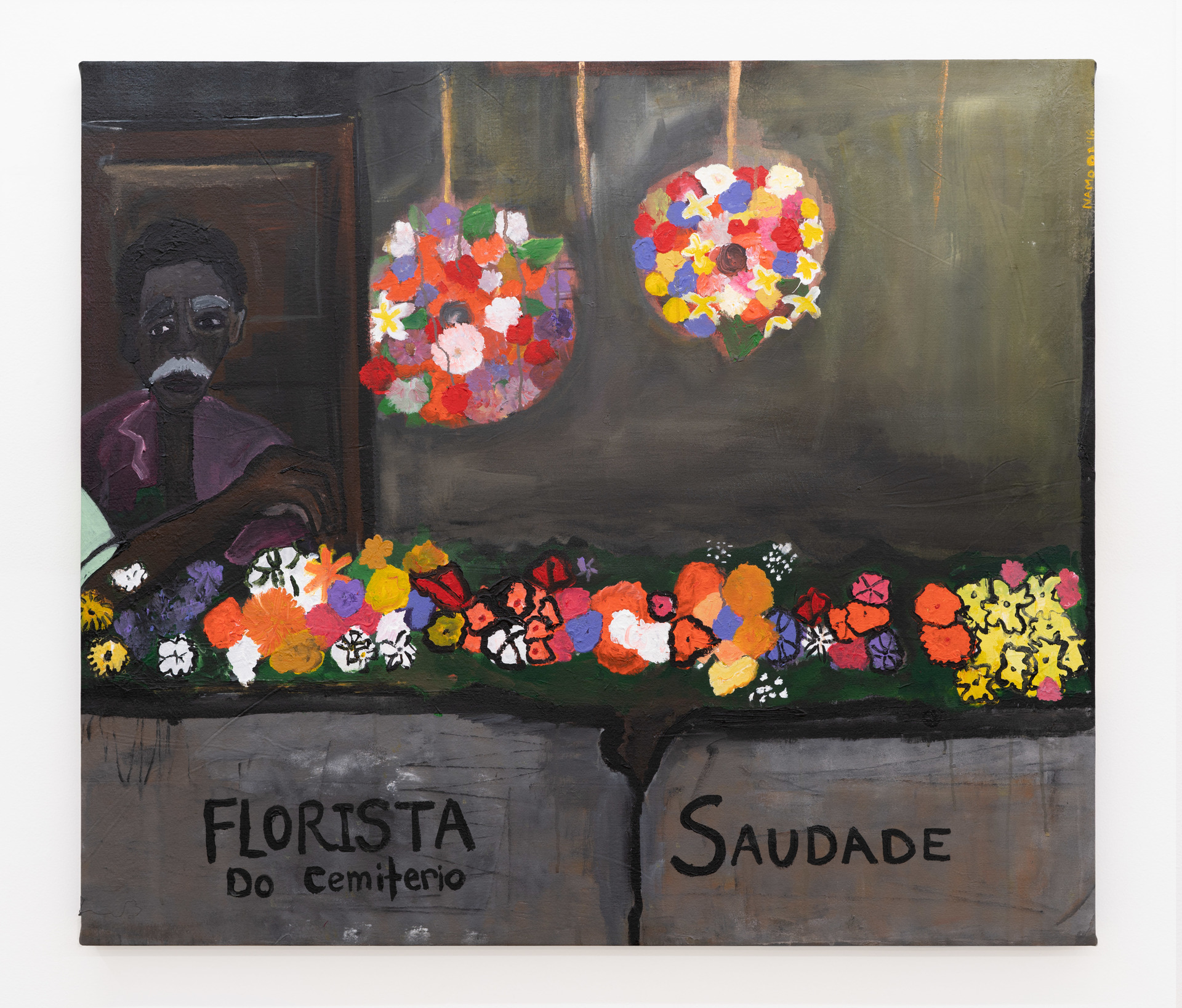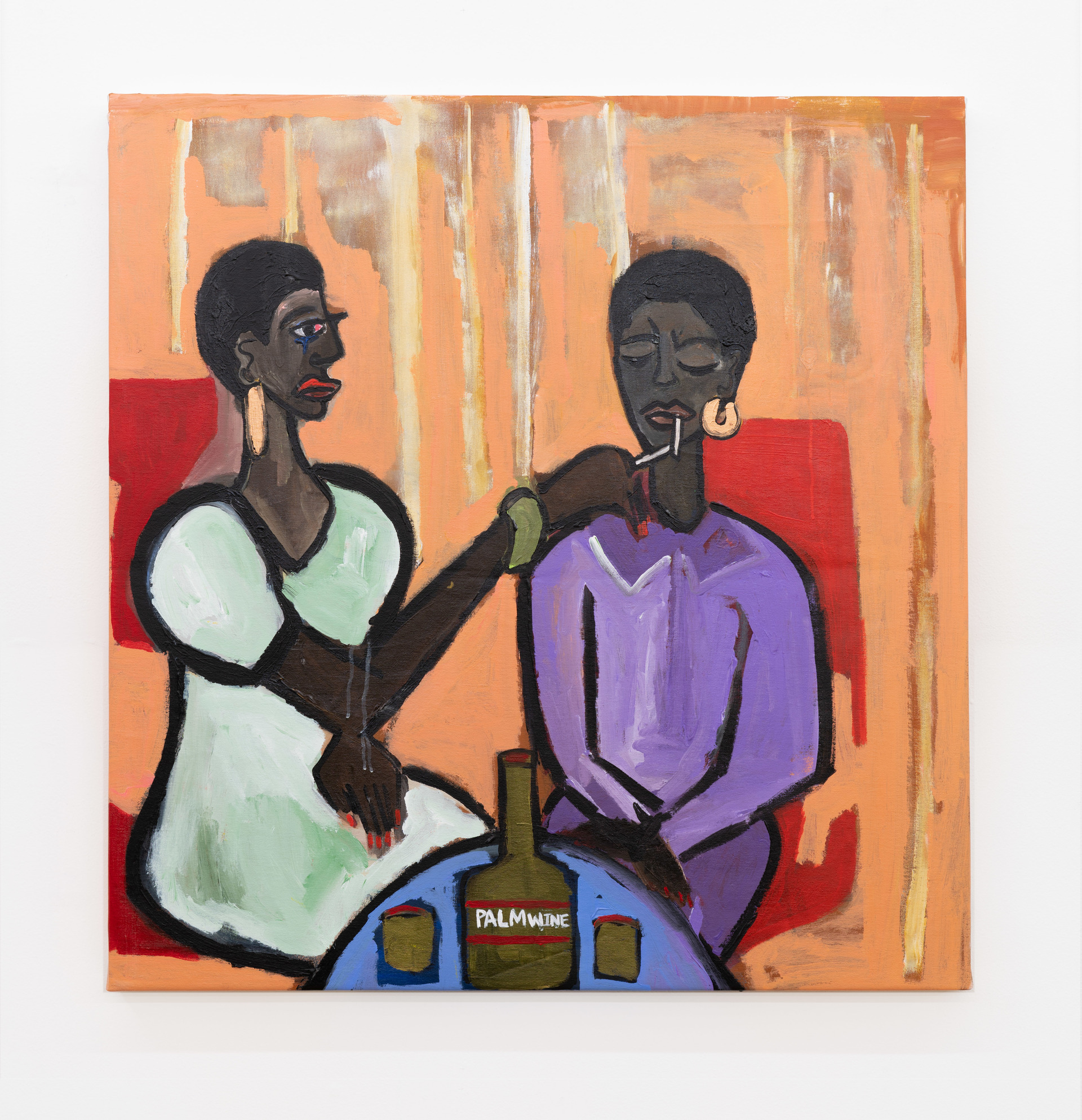Nina Johnson Gallery is pleased to present a selection of large-scale paintings by Cassi Namoda, on display September 7th – 29th, 2018. The paintings in Outside the Witch Doctor’s House reveal the shifting parallax between Western and African understandings of history and time: how life is experienced on a personal level, and how that experience shifts in a moment of globalized flow. With fast, fervent brushwork, Namoda deploys tropes of Western canonical painting, as well as the global language of cinematic composition, to portray the cadence of African village life: dim barrooms, slowly strolling animals, earthen huts, and witch doctors. The result is subversive and unsettling, exotic and banal.
Cassi Namoda was born in Maputo, Mozambique to an American father and a Mozambican mother, and then raised in cities across Africa, Haiti, and in the United States. Her paintings reflect this nomadic upbringing, as well as the near-constant mobility of her adult years. Painting is but one part of a catholic cultural sensibility—one also informed by cinema, fashion, and literature. Her studio practice is unanchored from the studio itself; she paints on the move: on the road, in hotels and Airbnbs.
The artist completed the paintings in Outside the Witch Doctor’s House over several weeks living in a house in Golden Glades, Florida. Tropical geography infuses the paintings, as do the rhythms of life tempered by sleep and the ocean. Yet the vibrant and brooding works shift towards an African context: one of physical impoverishment but spiritual wealth.
Often using paintings to reflect upon literary works, here Namoda responds to the the Kenyan priest and religious philosopher John Mbiti’s seminal African Religions & Philosophy (1961). In the book, which compares western and African forms of belief, Mbiti focuses on two Swahili notions of time. Zamani—the limitless graveyard of time—surrounds Sasha: the recent past, the present, and the near future. In other words, the small amount of time that we can grasp. Positioning Outside the Witch Doctor’s House between these two poles of temporal understanding, Namoda’s paintings reverberate between the mythological and the quotidian. They elevate the everyday, imbuing it with a supernatural quality.
These domestic tableaux—filled with priests and gamblers, a reclining woman with bewitching eyes, and a bleeding rainbow that seems both a sacrifice and blessing—combine the lush, languid sensuality of African arthouse cinema with the line work of Max Beckmann, the brash palette of Matisse, and the dream logic of Marc Chagall. As a biracial artist responding to East Africa’s Lusophone tradition, Namoda borrows from disparate genres, art forms, and historical eras. The result it distinctly post-colonial: a body of work that refers both to its own limits, and to the unseen influences existing far beyond the horizon—entangling what the viewer knows with what they’ve never seen before.
Cassi Namoda (b. 1988, Maputo, Mozambique) is an artist, curator, and fashion designer based in Los Angeles. Her recent solo exhibitions include Island of Earth at Front Room Gallery, Los Angeles (2017), Meat Is Meat + Our Nightly Bread at OOF Books, Los Angeles (2017), Bar Texas 1971 at Library Street Collective, Detroit (2018), and We Killed Mangy Dog at Harper’s Books, East Hampton (2018).





